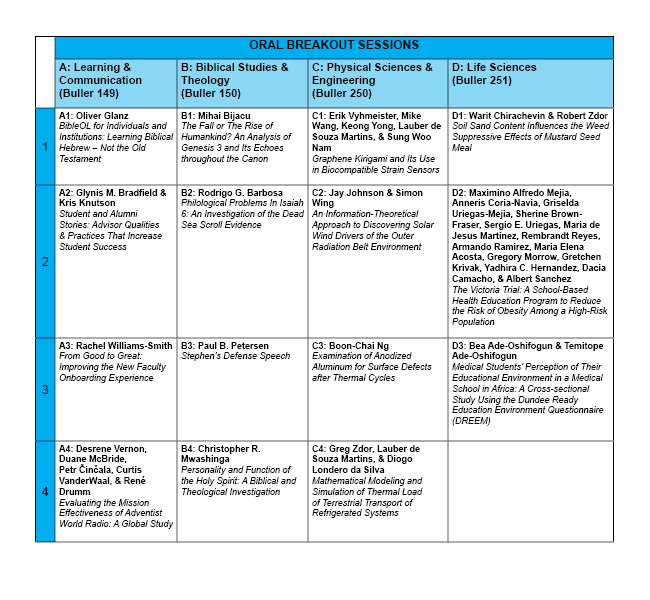D-3 Medical Students’ Perception of Their Educational Environment in a Medical School in Africa: A Cross-sectional Study Using the Dundee Ready Education Environment Questionnaire (DREEM)
Presenter Status
Chair, Department of Nursing
Second Presenter Status
Medical Doctor, University of Ghana Medical School
Preferred Session
Oral Session
Start Date
4-11-2016 3:30 PM
End Date
4-11-2016 3:45 PM
Presentation Abstract
Aim: To determine the clinical year students’ perceptions of their educational environment at the University of Ghana School of Medicine & Dentistry (UGSMD).
Method: A cross-sectional study was undertaken using DREEM questionnaire. 276 clinical year students at the UGSMD participated in the study. DREEM has 50 items, each rated using Likert scale. The items measure five domains: students’ perceptions of learning; perceptions of teachers; academic self-perception; perceptions of the atmosphere; and social self-perception. Mean item scores, domain scores, and global scores were computed. The results were analyzed using ANOVA to compare the means of the educational environment and its’ subscales within clinical year and gender.
Results: The two highest rated items for all groups were ‘the teachers are knowledgeable’ and ‘I am confident about my passing this year.’ The lowest Individual items were ‘there is a good support system for students who get stressed’; ‘my enjoyment outweighs the stress of studying medicine’; and ‘my accommodation is pleasant.’ There was no significant difference in global scores between clinical years (116 ± 13.9; 118 ± 17.4; 117 ± 15.3, p > 0.05). The overall educational environment was positive, however students’ perceptions of teachers, and students’ perception of the atmosphere subscales were negative. The students’ perception of learning, students’ academic self-perceptions and students’ social self-perceptions were positive with no gender inequality of the educational environment.
Conclusion: The overall educational environment was positive; however improvement is needed with students’ perception of the teachers and students’ perception of the atmosphere.
D-3 Medical Students’ Perception of Their Educational Environment in a Medical School in Africa: A Cross-sectional Study Using the Dundee Ready Education Environment Questionnaire (DREEM)
Aim: To determine the clinical year students’ perceptions of their educational environment at the University of Ghana School of Medicine & Dentistry (UGSMD).
Method: A cross-sectional study was undertaken using DREEM questionnaire. 276 clinical year students at the UGSMD participated in the study. DREEM has 50 items, each rated using Likert scale. The items measure five domains: students’ perceptions of learning; perceptions of teachers; academic self-perception; perceptions of the atmosphere; and social self-perception. Mean item scores, domain scores, and global scores were computed. The results were analyzed using ANOVA to compare the means of the educational environment and its’ subscales within clinical year and gender.
Results: The two highest rated items for all groups were ‘the teachers are knowledgeable’ and ‘I am confident about my passing this year.’ The lowest Individual items were ‘there is a good support system for students who get stressed’; ‘my enjoyment outweighs the stress of studying medicine’; and ‘my accommodation is pleasant.’ There was no significant difference in global scores between clinical years (116 ± 13.9; 118 ± 17.4; 117 ± 15.3, p > 0.05). The overall educational environment was positive, however students’ perceptions of teachers, and students’ perception of the atmosphere subscales were negative. The students’ perception of learning, students’ academic self-perceptions and students’ social self-perceptions were positive with no gender inequality of the educational environment.
Conclusion: The overall educational environment was positive; however improvement is needed with students’ perception of the teachers and students’ perception of the atmosphere.




Acknowledgments
None, but we are grateful to Sue Roff and Centre for Medical Education, Scotland, UK for the use of the DREEM questionnaire.